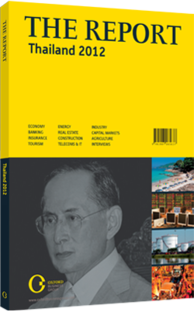Reduced barriers: Economic integration of ASEAN nations moves a step forward with new initiatives
Long-term trends have Thailand’s economy tilting ever closer to its own region, renewing a focus that had taken a back seat as the growth of manufacturing in the country led to a greater exposure to the world’s most developed economies. Natural market forces are one catalyst, as consumer demand in nearby countries such as China and Indonesia is on the rise. The regional focus comes from a top-down effort as well, primarily through the economic integration programmes of the Association of South-east Asian Nations (ASEAN).
A major step in 2012 will be the beginning of capital-markets linkages, as stock markets in Malaysia, Thailand and Singapore will be linked, allowing brokers direct access to trading in certain stocks on other participating bourses. Other reforms to follow include increased banking integration in 2013 and the ASEAN Economic Community in 2015. Full liberalisation of banking, which ASEAN leaders acknowledge is a strategic economic sector and therefore requires a slower pace, will come in 2020, although the Bank of Thailand is looking at perhaps bringing this timeline forward.
A STABILISING EFFECT: Despite concerns common to sovereign countries about surrendering control to a supranational block, and the missed or pushed-back deadlines for some of these reforms, the argument for economic integration remains a powerful one in the eyes of many leaders and economists. In particular, for a region with a recent history of conservative banking regulators and the fear of capital flight, caused by the memories of the 1997 Asian financial crisis, integration could lead to a more stable system and a lower cost of finance, according to the IMF. “More regional integration would afford countries a wider range of instruments and financial assets to obtain insurance against shocks and smooth consumption,” according to a speech delivered by Naoyuki Shinohara, the IMF’s deputy managing director, at Bangkok’s Chulalongkorn University in March 2012.
ASEAN LIST: The ASEAN List stocks will further this goal by allowing trades via an electronic platform, meaning that in participating countries, brokers can directly access stocks on the bourses of others, removing the need to go through a local broker. That means a reduction in fees for investors, and therefore for listed companies a larger pool of potential shareholders. The first links will be established between Malaysia, Thailand and Singapore in the summer of 2012, and then add stocks from bourses in Vietnam, Indonesia and the Philippines. Greater integration could help ASEAN countries gain the attention of international investors.
Separately, these smaller countries attract less attention because of their size than Japan, which has the world’s third-largest economy, and the populous giants India and China. The technological underpinning of the ASEAN List is a system called the ASEAN Common Exchange gateway. Brokers in one country will place an order on their home exchange, and the trade will be executed in the other country, which will be executed as a service by a broker there.
QUALIFIED BANKS: The next step toward integration will come in 2013, with the concept of ASEAN Qualified Banks. While the rules were still under discussion as of early 2012, such as at a meeting of ASEAN leaders in Phnom Penh in late March, the idea is that banks that meet certain standards will be able to operate in any ASEAN member state. Fuller details were expected to be available later in 2012, but many of the region’s large banks have already expanded throughout ASEAN countries, including CIMB Group and Maybank of Malaysia, Singapore’s United Overseas Bank, and Thailand’s Bangkok Bank. Though the standards had not been set, ASEAN watcher Edmund Sim, a Singapore-based lawyer, speculated in early 2012 that just three banks would meet the potential criteria.
The big change in 2015 will be the implementation of the ASEAN Economic Community, which would represent the leap to full economic integration, with some exceptions such as banking. According to the community’s blueprint, this process will require the free flow of goods, services, investment, capital and skilled labour.
You have reached the limit of premium articles you can view for free.
Choose from the options below to purchase print or digital editions of our Reports. You can also purchase a website subscription giving you unlimited access to all of our Reports online for 12 months.
If you have already purchased this Report or have a website subscription, please login to continue.

